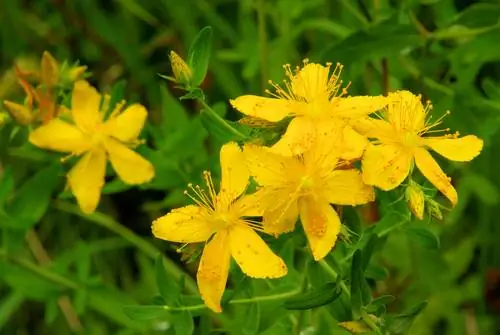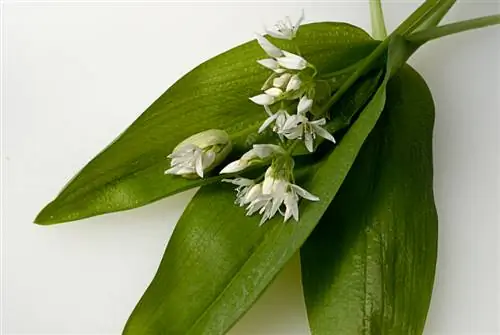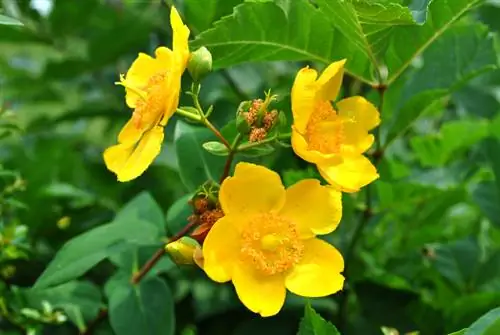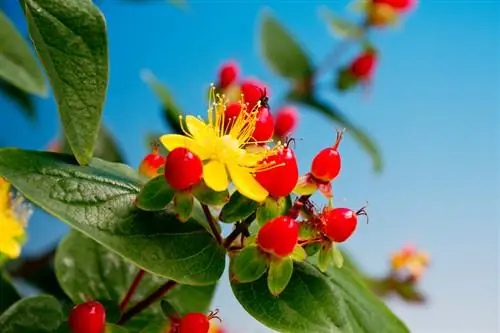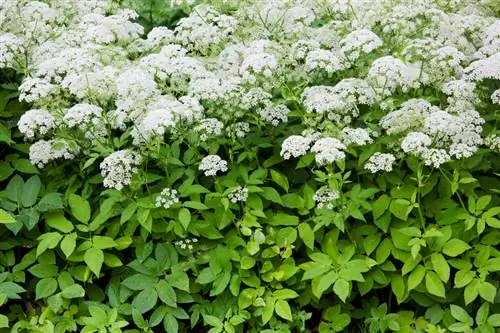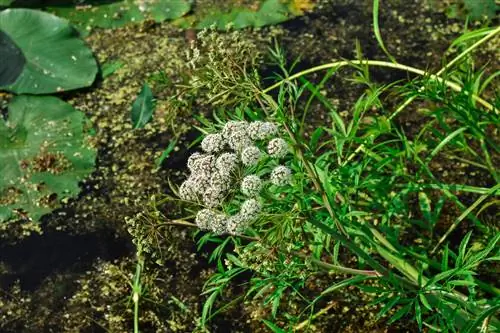- Author admin [email protected].
- Public 2023-12-16 16:46.
- Last modified 2025-01-23 11:20.
It's the end of June - the best time to collect St. John's wort. You should be able to recognize it easily by its flowers. But be careful: there are plants that look extremely similar to it and one of which is even highly poisonous!
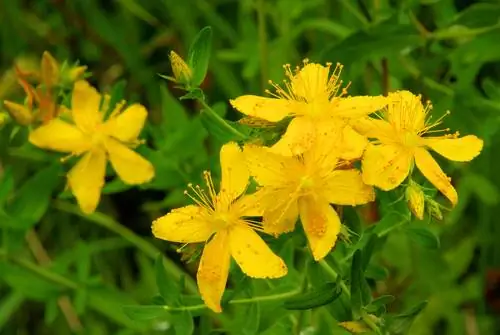
What can St. John's wort be confused with?
St. John's wort can be confused with the poisonous ragwort and the harmless meadow pippau. The differences are: St. John's wort leaves have translucent dots and release reddish juice when crushed; the flowers have 5 broad, round petals. Ragwort and meadow ragwort have different leaf and flower characteristics.
St. John's wort and ragwort - very similar
The highly poisonous St. James's ragwort is similar to the medicinal St. John's wort. Someone who doesn't really know St. John's wort and is looking for it in a meadow, for example, should be careful! At first glance, the poisonous St. James's ragwort looks like St. John's wort. A closer look reveals that they are quite different.
Jacob's ragwort is so dangerous because it contains alkaloids. Liver damage can occur after consuming this herb. In extreme cases, poisoning can be fatal. The leaves as well as the stems, roots and flowers are poisonous.
Different leaves
You can tell these two plants apart by looking at their leaves. St. John's wort has extremely distinctive leaves when you look at them closely. They have translucent, point-like areas. When ground they release a reddish juice.
The leaves of St. James' ragwort are completely different from the small, egg-shaped, smooth-edged and opposite leaves of St. John's wort:
- bigger
- form a rosette in the first year
- simply feathery
- blunt pointed
Different flowers
While the flowering period of both herbs is the same, the flowers look different. The inflorescence of Jacob's ragwort is richly branched, like St. John's wort. But the individual flowers look different. The flowers are composed of ray and tubular florets. This means that the flowers of St. James' ragwort are more similar to those of daisies or marigolds.
It is also striking that the flowers of St. John's wort only have 5 petals. These are broad and round in shape. Jacob's ragwort, on the other hand, has more than 5 petals. With him they are narrower and more elongated.
Another candidate for confusion: Wiesenpippau
The harmless Wiesenpippau also looks similar to St. John's wort. But there are certain differences here too:
- less leafy
- Flowers are more like dandelions
- Leaves are much larger
- blooms from May
Tip
If you are not 100% sure that it is St. John's wort, you should not collect the plant!

